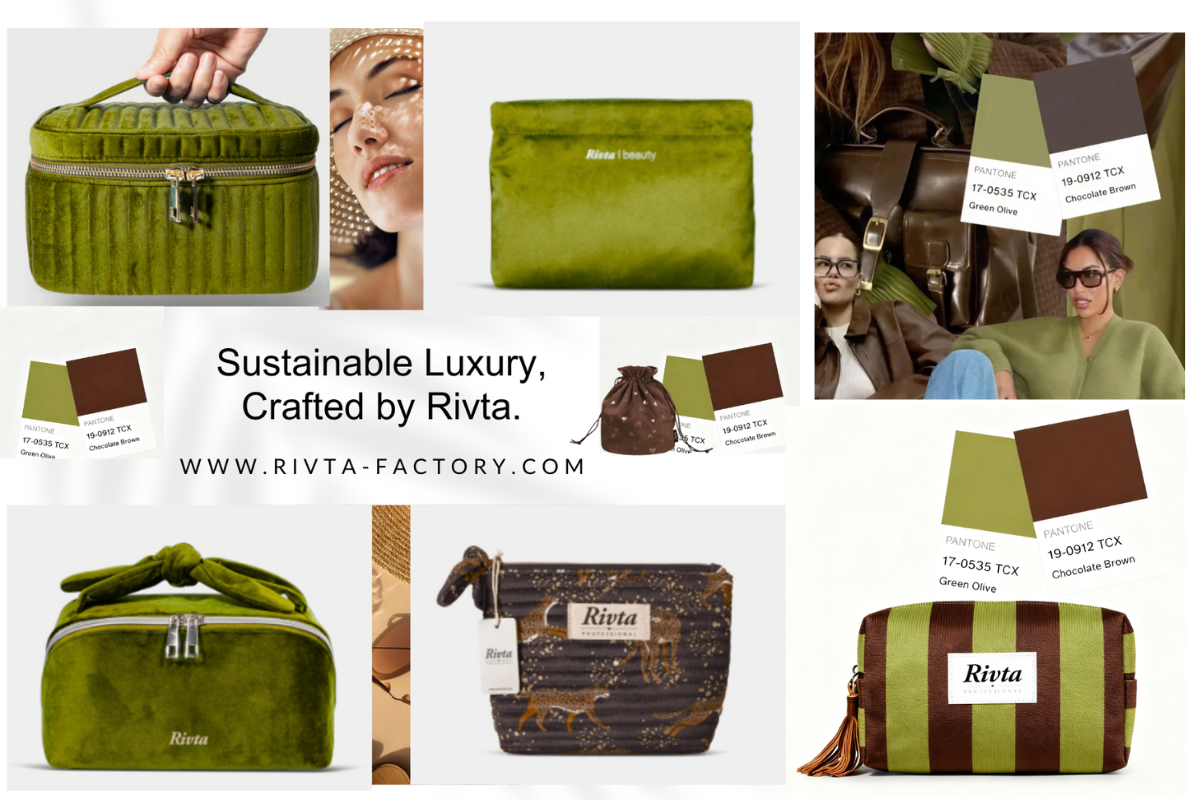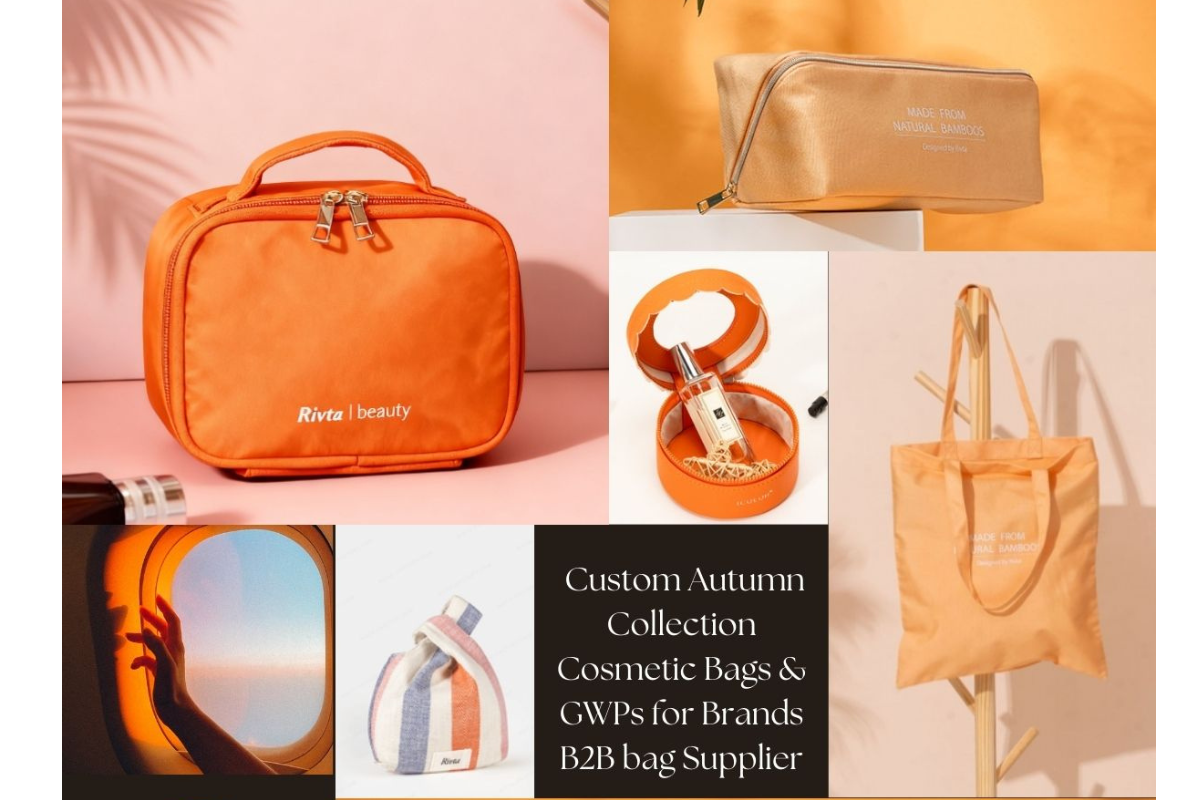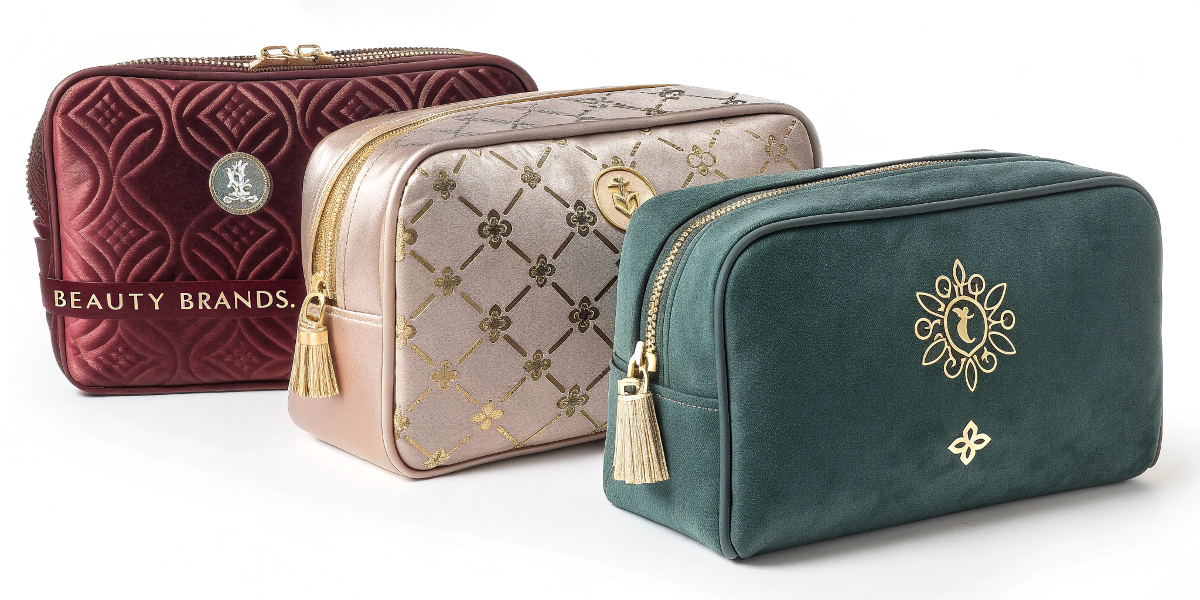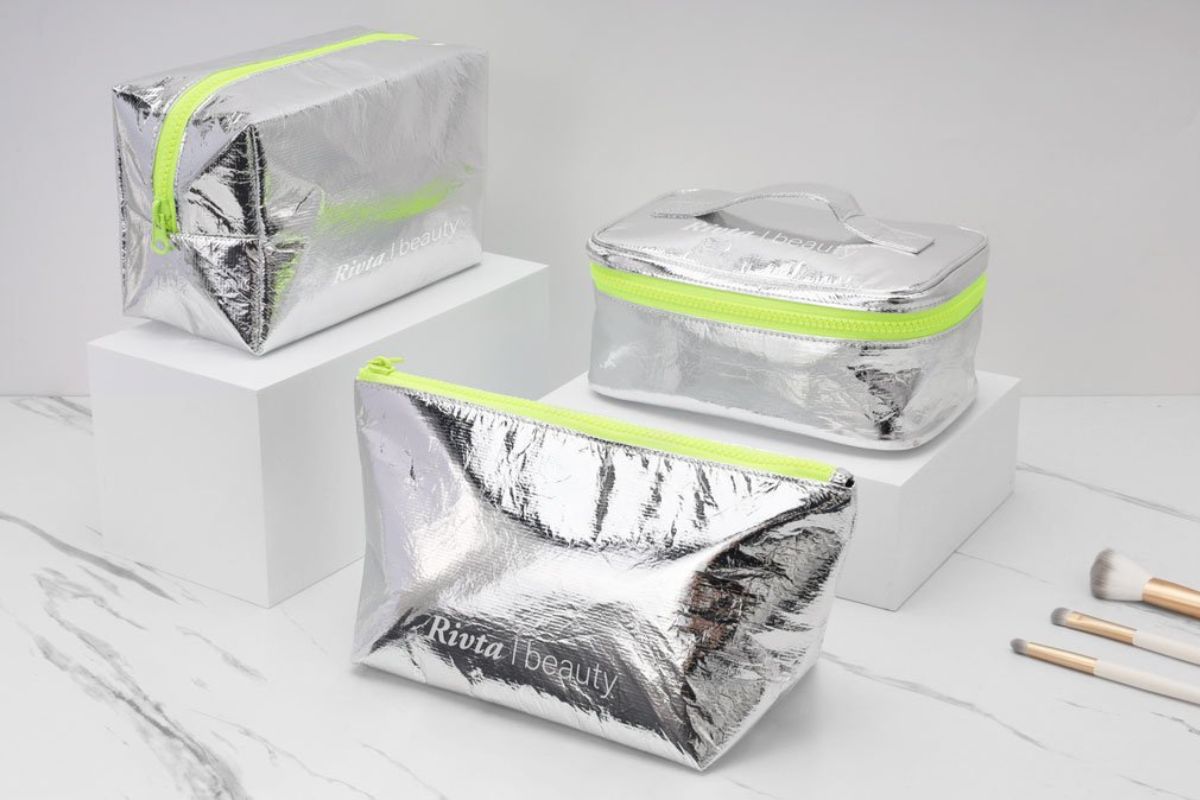A Practical Guide for Organic Brands to Source Eco-Friendly Cosmetic Bags
In today's conscious consumer landscape, the beauty industry is undergoing a profound transformation. Organic brands, in particular, are at the forefront of this shift, advocate natural ingredients and ethical practices. But the journey towards true sustainability extends beyond what's inside the bottle; it encompasses every element of your product, right down to the packaging. This is where eco-friendly cosmetic bags come into play – not just as a trend, but as a crucial component of your brand's integrity and appeal.
For discerning brand owners like yourself, who understand the shades of sourcing and the power of a cohesive brand message, navigating the world of sustainable packaging can seem complex. This guide is designed to empower you with the knowledge and foresights needed to confidently source eco-friendly cosmetic bags that align with your brand's values and resonate deeply with your target audience. We'll explore the 'why,' the 'what,' and the 'how' of making sustainable choices, ensuring your brand not only meets but exceeds the growing demand for environmental responsibility.

Understanding the 'Why' Behind Eco-Friendly Choices
For organic beauty brands, the commitment to sustainability isn't just a marketing buzzword; it's a core philosophy that underpins every decision, from formulation to packaging. The environmental footprint of the beauty industry is significant, with an estimated 120 billion packaging units generated annually, a vast majority of which are non-recyclable plastics. This staggering figure highlights the urgent need for brands to adopt more responsible sourcing practices, especially when it comes to accessories like cosmetic bags.
Beyond the undeniable environmental imperative, there's a compelling business case for embracing eco-friendly options. Consumers are increasingly making purchasing decisions based on a brand's sustainability credentials. A recent Nielsen study in 2023 revealed that a remarkable 73% of consumers are willing to pay more for sustainable products. This isn't just a fleeting trend; it's a fundamental shift in consumer values, driven by a heightened awareness of climate change and environmental degradation. Brands that authentically integrate sustainability into their operations, from product to packaging, build stronger trust and loyalty with their audience.
Moreover, the regulatory landscape is evolving rapidly to address environmental concerns. For instance, the European Union's Packaging and Packaging Waste Regulation (PPWR) mandates 100% recyclable packaging by 2030. While this directly impacts brands operating within or exporting to the EU, it sets a precedent for global standards and underscores the importance of proactive adaptation. Investing in eco-friendly solutions now isn't just about compliance; it's about future-proofing your brand and positioning yourself as a leader in responsible beauty.
Navigating the World of Sustainable Materials
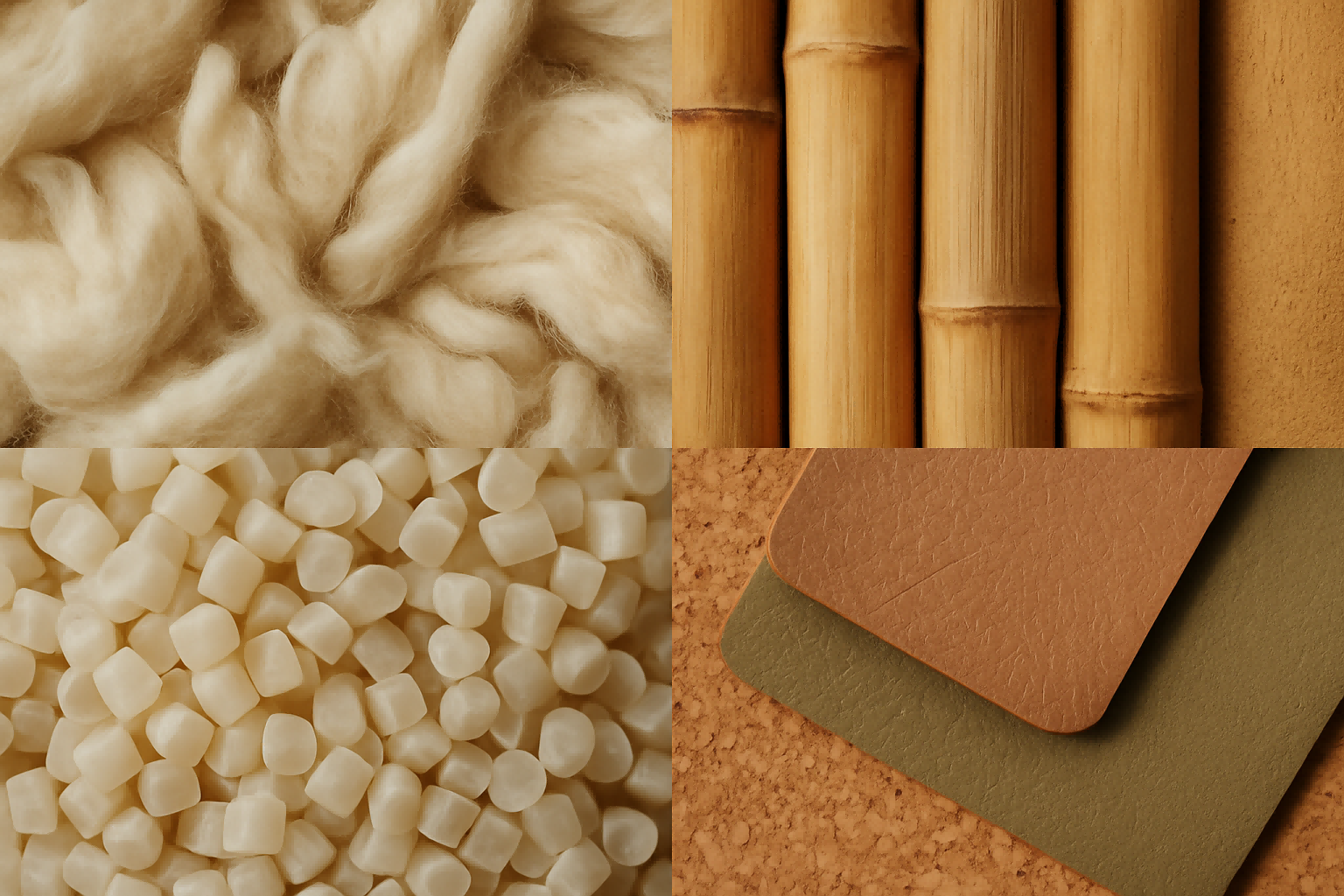
Let's delve into some of the most promising eco-friendly materials, understanding their unique properties, benefits, and considerations:
Natural Fibers:
- Organic Cotton: A perennial favorite for its soft touch, breathability, and natural aesthetic. GOTS certified organic cotton ensures that the material is produced without harmful chemicals, promoting both environmental and social responsibility throughout the supply chain. It's an excellent choice for a classic, understated look that speaks volumes about your brand's commitment to purity. However, it may require treatment for water resistance.
- Bamboo Fiber: Derived from one of the fastest-growing plants on Earth, bamboo fiber is incredibly sustainable, biodegradable, and requires minimal resources to grow. It offers a lightweight yet durable option with a natural, earthy appeal. Ideal for cosmetic bag linings or compact exteriors, its rapid regrowth makes it a highly attractive choice for brands looking to minimize environmental impact.
- Tencel™ (Lyocell): A luxurious fiber made from eucalyptus wood pulp, Tencel is produced in a closed-loop system that recycles water and solvents, making it exceptionally eco-friendly. It's known for its silky smooth texture, excellent breathability, and biodegradability. While it might come at a higher cost, its premium feel makes it perfect for high-end cosmetic bags, appealing to a discerning clientele who appreciate both luxury and sustainability.
- Natural Jute: A strong, rustic fiber from the jute plant, known for its durability and natural charm. Jute is renewable, compostable, and cost-effective, making it a practical choice for more robust cosmetic bags or secondary packaging. Its coarse texture lends itself well to a natural, craftsmanal aesthetic.
- Linen Cotton Blend: Combining the best of both worlds, this blend offers the natural look and feel of linen (from flax) with the softness and versatility of organic cotton. It's breathable, renewable, and can be customized to fit various branding needs, providing a natural yet refined option for cosmetic and toiletry bags.
- Banana Fiber: An innovative material extracted from the agricultural waste of banana plants, offering a biodegradable and lightweight option. Utilizing waste products, banana fiber provides a unique texture and a compelling eco-story for brands looking to stand out with truly unique and sustainable materials.
- Pineapple Fiber: Derived from pineapple leaf waste, Piñatex is a remarkable biodegradable and cruelty-free alternative to traditional leather. It offers a durable and sustainable option with a luxurious feel, supporting agricultural communities in the process. Its higher cost reflects the skilled processing involved, making it ideal for premium, vegan-friendly brands.
Recycled & Innovative Materials:
- Recycled PET (RPET): Made from recycled plastic bottles, RPET is a highly versatile and durable material that significantly reduces landfill waste. It's an excellent choice for cosmetic bags, makeup cases, and travel kits, offering a practical and widely recyclable solution. Its adoption helps brands transition away from virgin plastics, contributing to a circular economy.
- Recycled Vegan Leather: Crafted from recycled materials like polyurethane or plant-based waste, this material mimics traditional leather without any animal harm. It offers a cruelty-free, durable, and often recyclable option with a luxurious aesthetic. It's perfect for vegan and cruelty-free brands seeking a sophisticated yet sustainable alternative to animal products.
- Recycled Nylon: Made from discarded fishing nets, fabric scraps, or industrial nylon, this material is incredibly strong, lightweight, and helps reduce ocean pollution. It's ideal for durable toiletry bags and travel pouches, aligning with brands focused on ocean conservation and circular economy goals.
- Apple Leather: An emerging and exciting material made from apple peel and core waste, offering a biodegradable, plant-based alternative to traditional leather. It's vegan, reduces food waste, and provides an innovative appeal for brands targeting eco-conscious luxury markets.
When selecting materials, consider not just the environmental benefits but also the practicalities for your specific product. Think about the desired aesthetic – do you want a rustic, natural look, or something sleek and modern? How important is water resistance, and are you willing to explore treatments if needed? What about the feel and durability? Each material offers a unique combination of these attributes.
Beyond Materials: Key Features for Functional & Stylish Eco-Bags
While the choice of sustainable materials forms the bedrock of an eco-friendly cosmetic bag, its true value to your customers lies in its functionality, design, and overall quality. For organic beauty brands, these bags are not just packaging; they are an extension of your brand experience, often becoming a cherished item in your customer's daily routine or travel adventures. Therefore, thoughtful design and practical features are paramount.
Functionality First: Designed for Daily Life
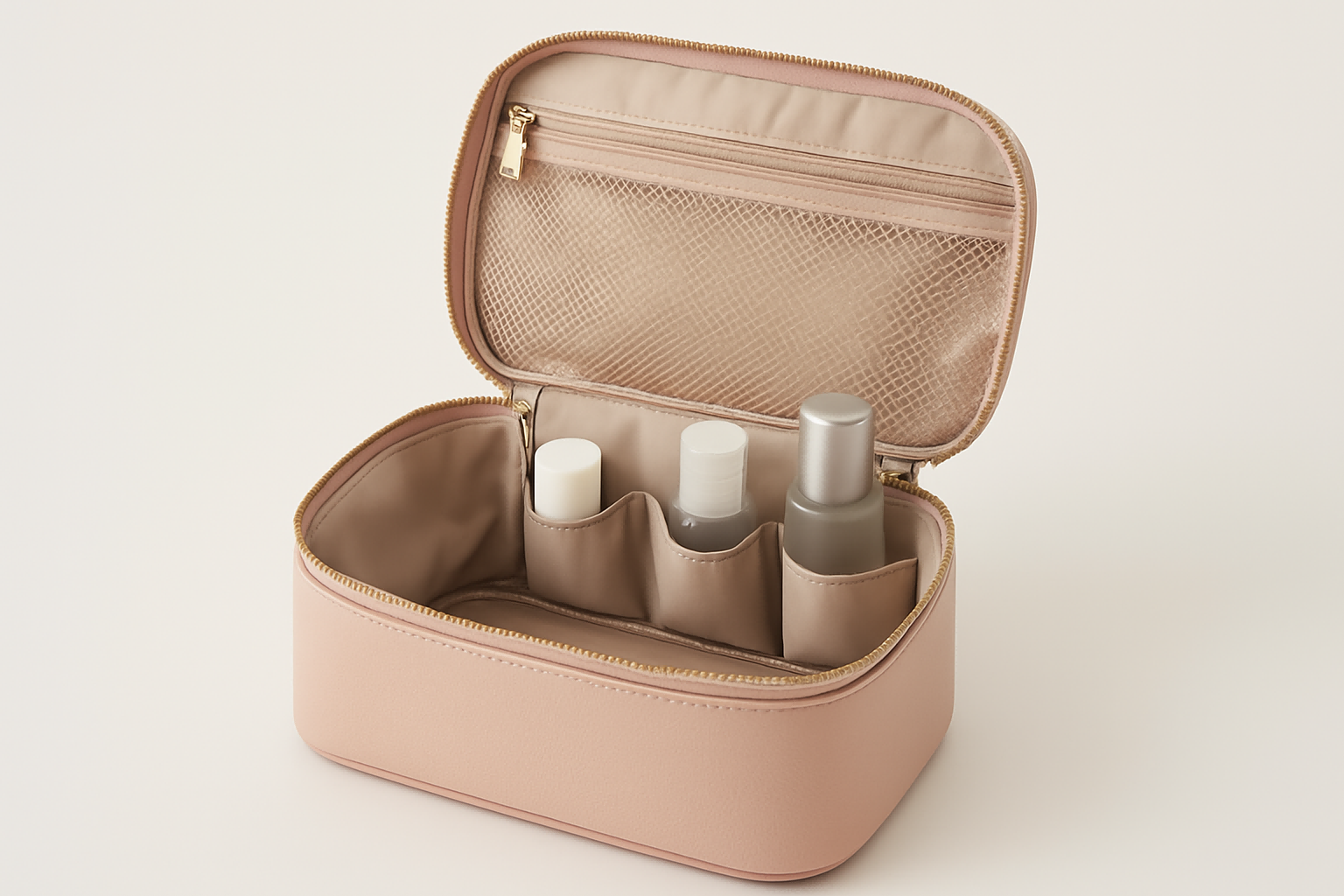
For a cosmetic bag to be truly useful, it needs to be well-organized and resilient. Consider these key functional features:
- Multiple Compartments: This is a non-negotiable for anyone who values organization. Separate pockets, elastic loops, or zippered sections for brushes, makeup, and skincare products make it incredibly easy for your customers to find what they need quickly. This thoughtful design prevents items from getting lost or damaged and enhances the user experience significantly.
- Water-Resistant Lining: Accidents happen, especially with liquids. A high-quality, water-resistant lining protects the bag's exterior and, more importantly, your customer's other belongings from accidental spills and leaks. This feature adds a layer of practicality and peace of mind, making the bag more durable and long-lasting.
- Compact yet Spacious Design: The ideal cosmetic bag strikes a perfect balance – it should be capacious enough to hold all essential items without being bulky or taking up excessive space in luggage or a handbag. Smart design and efficient use of space are key here, ensuring maximum utility in a minimal footprint.
Style Meets Versatility: Reflecting Your Brand Aesthetic
Cosmetic bags have evolved beyond mere utility; they are now fashion accessories that reflect personal style. For organic brands, this presents an opportunity to extend your aesthetic and values through your packaging. Consider incorporating current trends while maintaining a timeless appeal:
- Chic Minimalist Designs: Timeless, neutral tones and sleek lines create a versatile look that complements any style. These designs exude understated grace and can seamlessly transition from a travel accessory to a stylish everyday pouch, appealing to a sophisticated customer base.
- Bold Prints and Patterns: For brands that embrace vibrant aesthetics, bold prints and patterns can add personality and flair. This allows your cosmetic bags to stand out and become a statement piece, reflecting the unique character of your brand and appealing to customers who love to express their individuality.
- Clear Cosmetic Bags: While perhaps not the first thought for an organic brand, clear bags (made from eco-friendly TPU or recycled PVC) offer practical benefits, especially for travel. They allow for quick identification of contents and can meet TSA guidelines for liquids, making them a highly functional choice for the frequent traveler.
Tailored for Travel: Making Life Easier on the Go
Many of your customers lead busy lives and are often on the move. Designing cosmetic bags with travel in mind can significantly enhance their appeal:
- Compact, Foldable Designs: Space is always at a premium when traveling. Bags that can be easily folded or compressed when not full are incredibly convenient, fitting neatly into luggage without adding unnecessary bulk.
- Hanging Cosmetic Bags: A bag with a built-in hook can be a game-changer for travelers. It allows the bag to be hung on bathroom doors or towel racks, keeping essentials accessible and countertops clutter-free – a small detail that makes a big difference.
- Lightweight Materials: Choosing materials that are durable yet lightweight ensures that the cosmetic bag doesn't add unnecessary weight to your customer's luggage, making travel more comfortable and efficient.
Investing in Quality: Durability for a Sustainable Future
True sustainability also means longevity. A well-made cosmetic bag that stands the test of time reduces the need for frequent replacements, thereby minimizing waste. When evaluating potential products, pay close attention to the details that signify quality:
- High-Quality Zippers: Smooth, sturdy zippers are crucial for easy access and preventing frustrating snags or breakage. A durable zipper ensures the bag remains functional for years.
- Durable Stitching: Reinforced stitching, especially at stress points like handles and seams, ensures the bag can withstand regular use without falling apart. This attention to detail speaks volumes about the overall quality and craftsmanship.
- Reinforced Handles: If the bag includes handles, ensure they are strong and securely attached. This provides confidence when carrying or hanging the bag, contributing to its overall durability and user satisfaction.
A table for customization Trends in 2025
| Trend | Description | Implementation Example |
|---|---|---|
| Minimalist Design | Clean, simple styles with neutral colors and uncluttered layouts | Neutral-toned bag with embossed logo |
| Refillable Packaging | Durable materials for multiple refills, reducing waste | Bag with removable, refillable compartments |
| Personalized Packaging | Custom designs, colors, or names using digital printing | Monogrammed initials on the bag |
| Interactive Packaging | QR codes or AR for tutorials, virtual try-ons | QR code linking to usage guide |
| Multi-Sensory Experiences | Textured paper, embossing, foil stamping, or subtle scents | Textured fabric with embossed brand name |
| Tech-Driven Sustainability | Blockchain for ethical sourcing, AR to reduce samples | Blockchain-verified material sourcing |
These tables provide a quick reference for product developers to implement eco-friendly and customized designs.
By meticulously considering these design and quality features alongside your material choices, you can offer eco-friendly cosmetic bags that are not only sustainable but also highly functional, stylish, and built to last. This holistic approach ensures that your brand delivers exceptional value and reinforces its commitment to both quality and the planet.
The Sourcing Journey: Partnering for Success

Finding the right manufacturing partner is as crucial as selecting the right materials. For organic brands, this partnership extends beyond mere production; it's about aligning with a supplier who shares your commitment to sustainability, quality, and ethical practices. A strong partnership ensures that your eco-friendly vision translates seamlessly into a tangible product that meets both your standards and your customers' expectations.
What to Look for in a Sustainable Supplier:
When embarking on your sourcing journey, consider these key attributes in a potential partner:
- Shared Values and Transparency: Look for a manufacturer who genuinely understands and advocates sustainability. They should be transparent about their sourcing, production processes, and labor practices. This alignment in values is fundamental for a truly ethical supply chain.
- Certifications and Compliance: Certifications like BSCI (Business Social Compliance Initiative) and ISO9001 are strong indicators of a manufacturer's commitment to ethical production and quality management. These certifications provide assurance that the supplier adheres to international standards for social responsibility and quality control.
- Experience and Expertise: A manufacturer with extensive experience in producing sustainable bags understands the shades of working with eco-friendly materials, ensuring optimal quality and durability. Their expertise can also guide you in material selection and design optimization.
- OEM/ODM Capabilities: The ability to offer Original Equipment Manufacturing (OEM) and Original Design Manufacturing (ODM) services is invaluable. This means the supplier can either produce bags based on your existing designs (OEM) or collaborate with you to develop new, custom designs from scratch (ODM). This flexibility allows for unique product development that perfectly reflects your brand identity.
- Quality Control and Assurance: A reliable partner will have robust quality control measures in place throughout the production process, from material inspection to final product assessment. This ensures consistency and adherence to your brand's quality standards.
- Production Capacity and Scalability: Assess whether the manufacturer can meet your current production needs and scale up as your brand grows. A partner with significant production capacity can support your expansion without compromising quality or delivery timelines.
Rivta Factory: Your Partner in Sustainable Sourcing
Rivta Factory exemplifies the ideal partner for organic beauty brands seeking eco-friendly cosmetic bags. With over 30 years of experience in the industry, they have established themselves as a leader in sustainable manufacturing. Their impressive track record includes:
- Decades of Expertise: Since 1990, Rivta has been perfecting the art of sustainable beauty accessories, offering invaluable foresights and technical know-how.
- L'Oréal Audited Supplier: This prestigious accreditation underscores their commitment to the highest standards of quality, ethics, and environmental responsibility, providing a strong assurance of their capabilities.
- High Production Capacity: With the ability to produce over 200,000 pieces per month, Rivta can efficiently handle large orders while maintaining consistent quality, supporting brands of various sizes.
- Commitment to Sustainable Materials: As highlighted earlier, Rivta specializes in working with a wide array of recyclable and natural materials, ensuring your products are genuinely eco-friendly from conception to creation.
- OEM & ODM Services: Their comprehensive OEM and ODM capabilities mean they can bring your unique designs to life or collaborate with you to innovate new, sustainable cosmetic bag solutions.
Tips for Effective Communication and Collaboration:
Building a successful partnership with your manufacturer requires clear communication and a collaborative approach:
- Provide Detailed Specifications: Be precise with your design specifications, material requirements, and quality expectations. The more information you provide upfront, the smoother the production process will be.
- Establish Clear Communication Channels: Agree on preferred communication methods and response times to ensure efficient information exchange.
- Regular Check-ins: Schedule regular updates and progress reviews to stay informed and address any potential issues proactively.
- Provide Constructive Feedback: Offer clear and actionable feedback throughout the sampling and production phases to ensure the final product meets your vision.
By choosing a partner like Rivta Factory, you're not just sourcing cosmetic bags; you're investing in a relationship that supports your brand's sustainable mission, ensures product quality, and contributes to a more responsible beauty industry.
In the dynamic world of organic beauty, every choice you make, from the ingredients in your formulations to the packaging that cradles your products, speaks volumes about your brand. Sourcing eco-friendly cosmetic bags is more than just a trend; it's a powerful statement of your commitment to sustainability, a tangible expression of your values that resonates deeply with today's conscious consumer.
By embracing sustainable materials, prioritizing thoughtful design, and forging strong partnerships with ethical manufacturers, you not only contribute to a healthier planet but also build a more resilient and respected brand. The journey towards complete sustainability is ongoing, but each step, like choosing an eco-friendly cosmetic bag, propels your brand forward, fostering loyalty and making a tangible difference.
We hope this guide has illuminated the path, providing you with the foresights and confidence to make informed decisions. Now, it's time to take the next step. Explore the possibilities, connect with partners who share your vision, and continue to lead the way in creating beauty that is truly good for both people and the planet.
